The Smoky & Blue Ridge mountains receive excessive amounts of rainfall each year, creating damp forests which served as the epicenter for Plethodontid salamander evolution over the course of thousands of years. Salamanders from the family Plethodontidae are lungless salamanders, breathing is achieved through the skin via a process known as cutaneous respiration. This process requires the skin to be moist, so its easy to see why the southern Appalachians served as the epicenter of evolution for this family of salamanders in North America. Within a few minutes of flipping cover in the high elevation Spruce-Fir forest, I found my target.
Jordan's Salamander - Plethodon jordani
This beautiful salamander species is abundant in higher elevations of the park. It is easily distinguished by its bright orange cheeks where it gets its other name from, the Red-cheeked Salamander. Bright colors usually indicate a warning in nature, and the Jordan's Salamander is no exception as it is quite toxic to the point that most animals will avoid eating them. Other salamander species in the region have taken advantage of some outstanding mimicry to avoid predation.
Imitator Salamander - Desmognathus imitator
This Desmog species disguises itself to resemble noxious species, like the Jordan's Salamander. The Imitator Salamander is an extremely abundant species which only occurs inside the limits of the national park. Most are distinguishable by their bright orange cheek patches, but some individuals maybe be completely dark, like the individual pictured below.
The Ocoee Dusky Salamander exists in the mountains of western North Carolina, where it shares habitat with the Red-legged Salamander (Plethodon shermani). Like the Jordan's Salamander, it is noxious and is usually avoided by predators. The Ocoee is interesting though, as some individuals also exhibit red cheeks, though the Jordan's Salamander is not located anywhere near where the Ocoee is found. It is likely that this is a trait is a remnant from the evolution of the Ocoee throughout the course of thousands of years. While at a lower elevation stream near Cades Cove, this salamander was found.
Imitator Salamander - Desmognathus imitator
Ocoee Dusky Salamander - Desmognathus ocoee
Longtail Salamander - Eurycea longicauda
This brightly colored species is common throughout lower elevations of the park, where it can be found under cover along streams, creeks, and even it wet rock crevices. It gets its name for its abnormally long tail in proportion to its body, though the individual in the photo above had lost a good portion of its tail and was only beginning to regenerate it. After spending a short time in the lower elevations of the park, I decided to swing over to some of the larger order streams to search for a few larger species in the park.
These more powerful streams are home to some of the larger salamanders in the Smokies, such as the Black-bellied Salamander and Shovelnose Salamander. Though I didn't find any marmoratus this year, the Black-bellied Salamanders were out in full force.
Black-bellied Salamander - Desmognathus quadramaculatus
These big bruisers are one of the largest species of the genus Desmognathus, and are often seen in some of the roughest current areas of streams clinging to large rocks. Their attitude is something to be appreciated, as I've had several individuals nip at me when trying to extract them from a crevice for photos. This species gets its name for the dark gray belly, but adults can be extremely variable and are often confused with the Shovelnose Salamander (Desmognathus marmoratus). Shovelnose are much more aquatic than the Black-bellied and also exist in smaller order streams.
A view that I will miss, the Smoky Mountains are an amazing place. Later on the evening, I set off for a location in North Carolina that I purposely set aside for last. It is home to salamander species that I've wanted to see in the field for a long time, the Yonahlossee. On my way to the site, I happened to round a corner on a forest road in the NC mountains and saw this ahead of me.
Timber! I managed to swerve around this snake and pull off on the side of the road. This was an enexpected, but very welcome find as I don't get to see this species very often.
Timber Rattlesnake - Crotalus horridus
This was a fairly young Timber Rattlesnake, right around two feet in length. Though it is not protected in North Carolina, this species is experiencing declines statewide due to habitat loss, road mortality, and persecution by humans. If it had been any other motorist this snake would likely be dead, as many rural residents of NC routinely run these species over intentionally. It's a shame, as the Timber Rattlesnake is an integral part of many NC ecosystems. After shooting a few photos, we parted ways and I was off to my final stop of the trip. I arrived on a remote talus slope in the NC highlands around midnight, and began to scale the hillside with my headlamp on. It wasn't before long that I saw a sight that I've wanted to see for a long time.
Yonahlossee Salamander - Plethodon yonahlossee
The Yonahlossee Salamander is an extremely large Plethodontid which is found only at high elevations in a few places in Tennessee, North Carolina, and Virginia. It prefers rich, forested slopes with talus and old windfalls where it emerges from a burrow at night to forage. First describes by E.R. Dunn in 1917, the species received its name from Yonahlossee Road near the original collection site in North Carolina. Yonahlossees are large for a Plethodontid, the individual above was easily seven inches in length, some attain even larger lengths. This was the only Yonahlossee I handled the entire night, I was content to watch the other dozen or so I saw on the prowl on a talus rock face.
Though my trip to the southern Appalachians was shorter than my trip last year, it provided with me with just as many memorable experiences and surprises as the year before. I just might have to make another trip down sometime to get one or two species that I'd still like to see. That's all for now, until next time, happy herping!

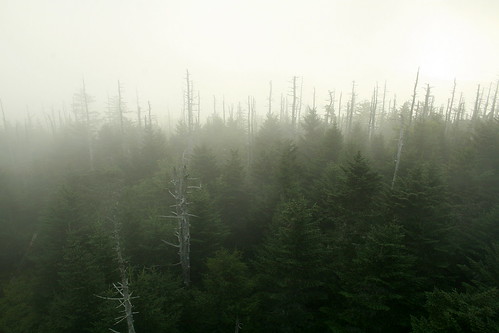
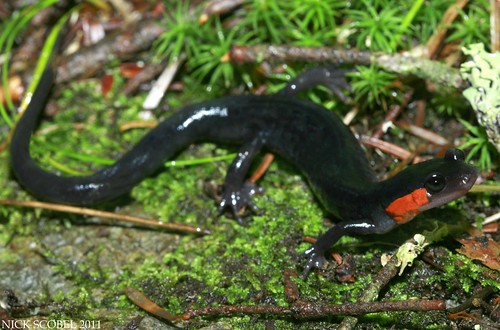
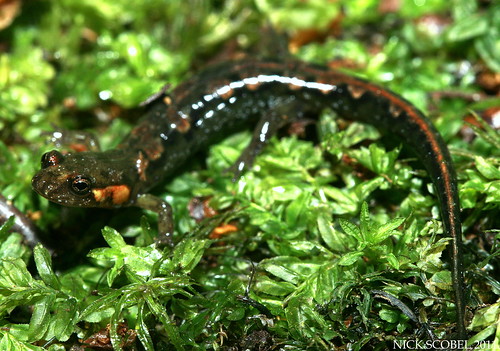
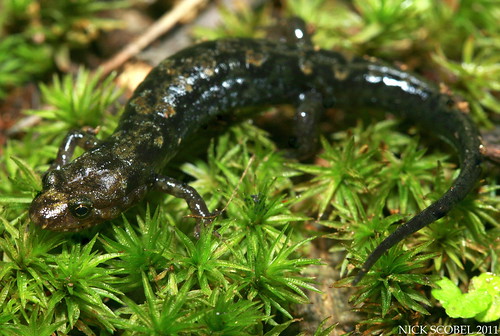

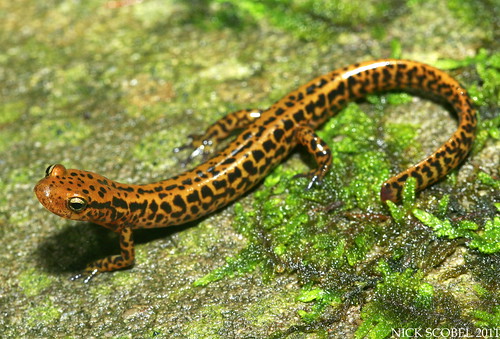
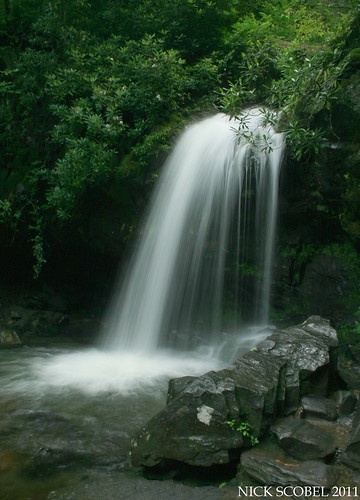
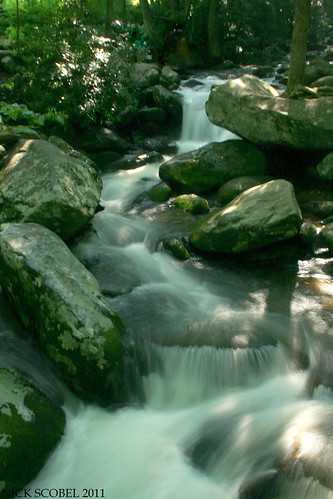
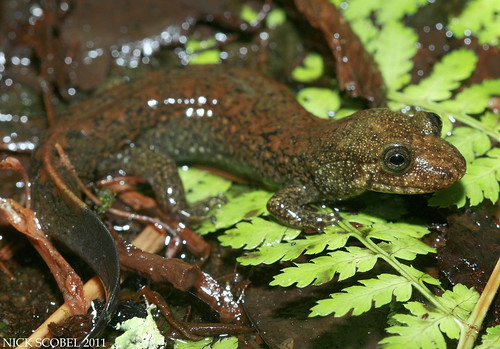
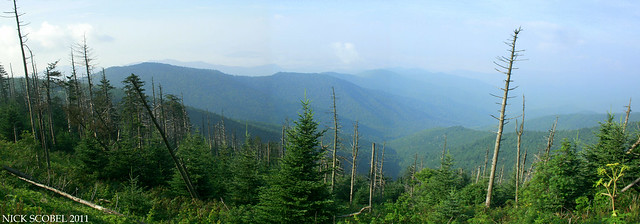
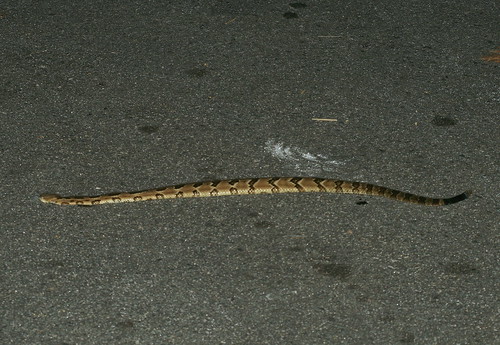
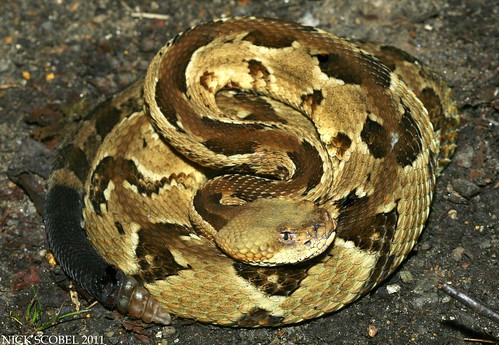

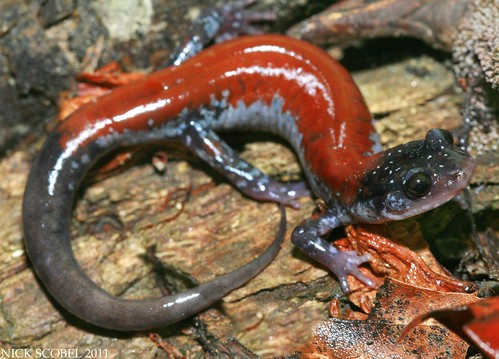
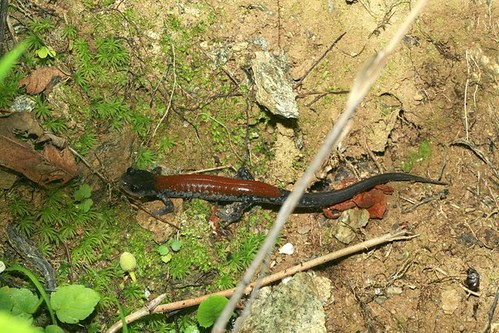
Wow! Amazing photos! I've always wanted to see Yonahlossee and Jordan's Salamanders in the wild. Great finds.
ReplyDeleteThanks, the Yonahlossees were a real treat for me.
ReplyDeleteGreat post. Yonahlossee is a big time target species for me. Can't wait to go searching for them!
ReplyDelete